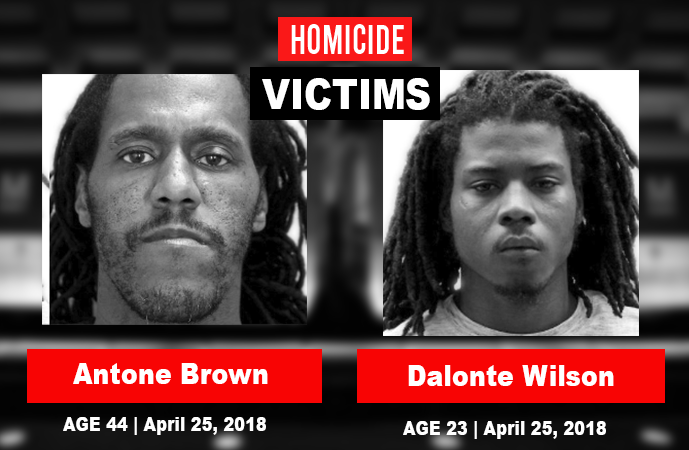
Thank you for reading D.C. Witness. Help us continue our mission into 2024.
Donate NowBy
D.C. Witness Staff
- May 9, 2023
Daily Stories
|
Documents
|
Homicides
|
Shooting
|
Suspects
|
Victims
|
Whether a weapon introduced as evidence matches the gun used to kill two murder victims was hotly debated during an ongoing trial before DC Superior Court Judge Rainey Brandt on May 8.
Alphonso Walker, 45, is charged with two counts of first-degree murder in connection to the deaths of Dalonte Wilson, 23, and Antone Brown, 44, near the 400 block of 61st Street, NE on April 25, 2018. Walker has been held in the DC Jail since December 2018.
Prosecutors called a firearms consultant to make their case. The forensics analyst explained how he test-fired a nine-millimeter semi-automatic pistol and compared the results to spent bullets and fragments collected after the crime.
The weapon identification is based on microscopic observations in the ballistic material called “class characteristics” and “random imperfections,” the expert said. In other words, some things that all bullets have in common such as lines and grooves and how they’re subtly modified when a round is fired.
In a summary slide, the expert concluded the gun he examined “may have fired” the recovered fragments, and there is “strong support” for that conclusion.
Walker’s defense attorney Prescott Loveland pressed the witness about the certainty of his identification given that nine-millimeter ammunition is the world’s most popular type and bullets share common characteristics–something the witness acknowledged.
During earlier questioning by the prosecution, the ballistics expert used a series of split slides comparing his spent test bullets on one side to the shell casings and bullet fragment evidence on the other.
During cross-examination, Loveland asked the expert to make repeat identifications of the images. The expert admitted he misidentified one of the slides. “People make mistakes,” said Loveland.
The witness said he’s made thousands of weapon identifications for law enforcement agencies including prosecutors in the DC Superior Court.
Meanwhile, a DC medical examiner testified that Brown died as a result of three gunshot wounds while Wilson was killed by a single bullet wound to the neck. The jury viewed the autopsy photos.
Earlier in the day the trial was delayed because of an alternate juror’s concern that someone in the courtroom was sending non-verbal signals to Walker. Judge Brandt said she was “flabbergasted” by the revelation and Walker’s defense team denied he had any part in the action. However, Walker’s lawyers were concerned that the juror might have developed a bias against their client.
After interviewing the juror, Judge Brandt moved him from the first alternate position to the last alternate position to resolve the issue.
The prosecution says it will conclude its case next week. The trial is scheduled to continue on May 10..
Follow this case